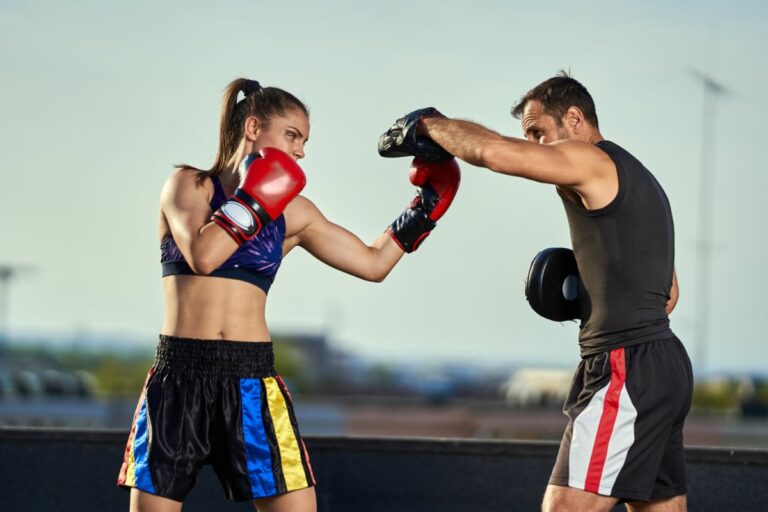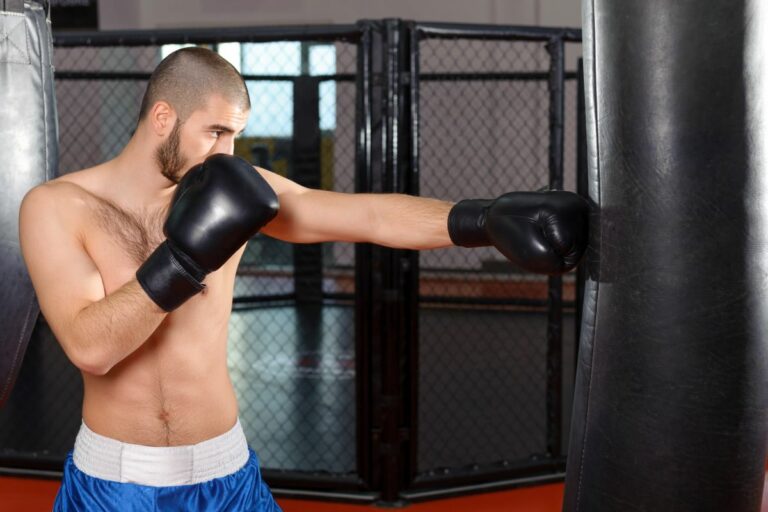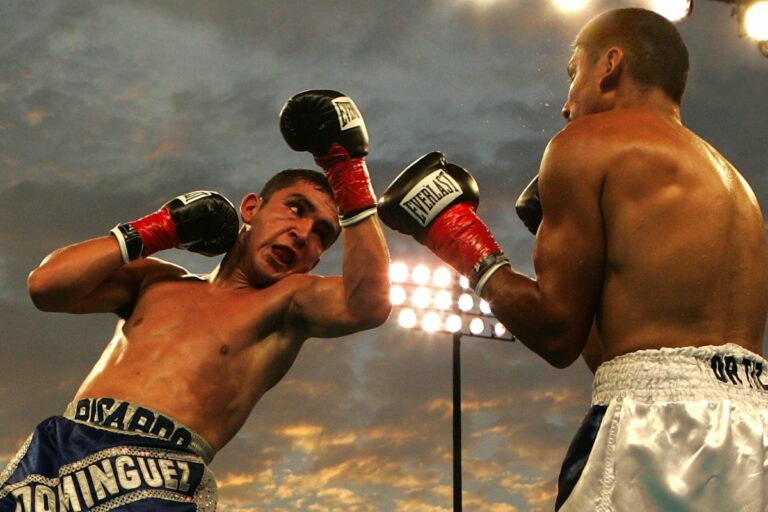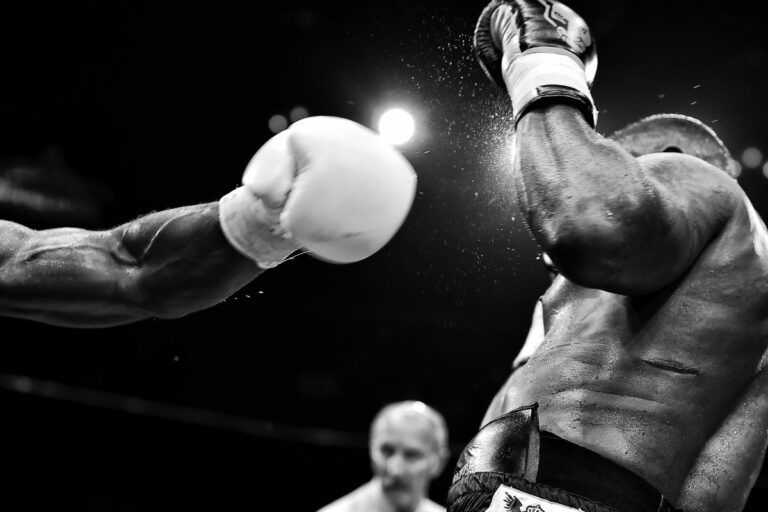Boxing Vs. Kickboxing: Which Is Better?
Boxing and kickboxing are two of the most popular combat sports around the globe, and there are keen fans on both sides claiming that their chosen sport is better – but which emerged victorious?
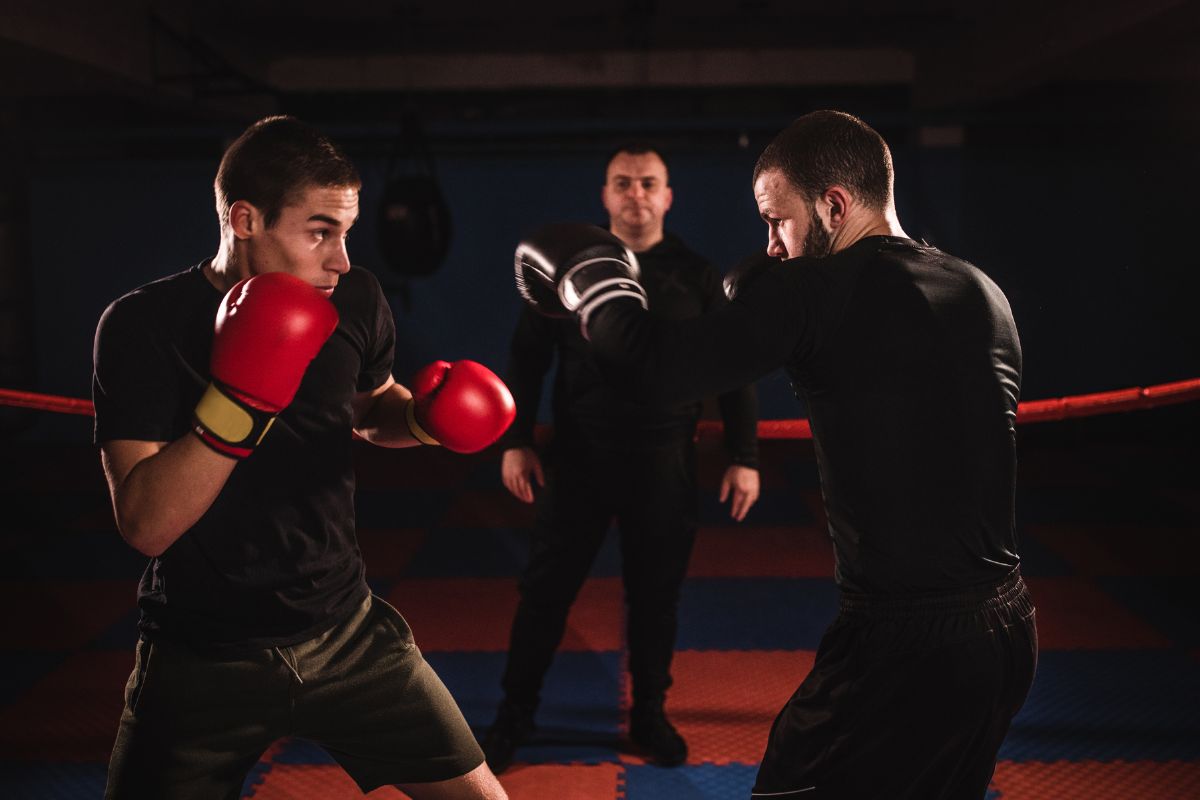
We sent boxing and kickboxing head to head in an effort to discover the ultimate reigning champion. Which one is better? There’s only one way to find out…
What Is Boxing?
Boxing is one of the most popular combat sports in the world, with evidence of participants in the sport dating back to at least 3000 BC, and there is plenty of evidence that boxing formed a key part of the lives of the Ancient Greeks, and was a major focus of the original Olympics.
Since then , boxing has never lost its popularity; the modern Olympic Games began in 1896, and since then boxing has been a core component of every edition of the games.
The first modern Olympic boxing tournament took place in Athens in 1881, and ever since then the sport has featured regularly in the Summer Olympic programme.
Boxing is also a regular event at the Commonwealth Games, and is included as part of the World Championships for many other sporting bodies. It’s no wonder that it’s become such a globally recognised activity.
The History Of Boxing And Its Evolution
While boxing has existed for thousands of years, it wasn’t until the 19th century that it became truly organized.
In England, the first recorded professional heavyweight championship bout took place in 1867 between Tom Sayers and Jem Mace.
This was followed by several others, including a match between John L Sullivan and Tommy Burns in 1892, who would go on to be regarded amongst the greatest heavyweight boxers of all time.
In America, the first documented professional fight took place in 1887 when James J Corbett defeated George Dixon.
By 1900, boxing had become hugely popular across the US, and the inaugural World Heavyweight Championship was held in 1908 between Jack Johnson and Jim Jeffries.
Since then, the heavyweight division has remained an important feature of the sport, although the weight classes have changed over the years.
In recent decades, boxing has seen a surge in popularity, particularly among women and children.
Women now make up more than half of amateur boxers, and the number of female professionals has risen dramatically in recent years.
Children are now taking up the sport too, with the UK having some of the highest numbers of youngsters participating in any country in the world.
How Does Boxing Work?
Boxing is a very simple sport, and can be broken down into two main parts – the punches, and the techniques.
The Punches
There are four basic types of punches used in boxing: jabs, hooks, uppercuts and crosses. These are made using combinations of straight punches (jabs) and hook punches (hooks).
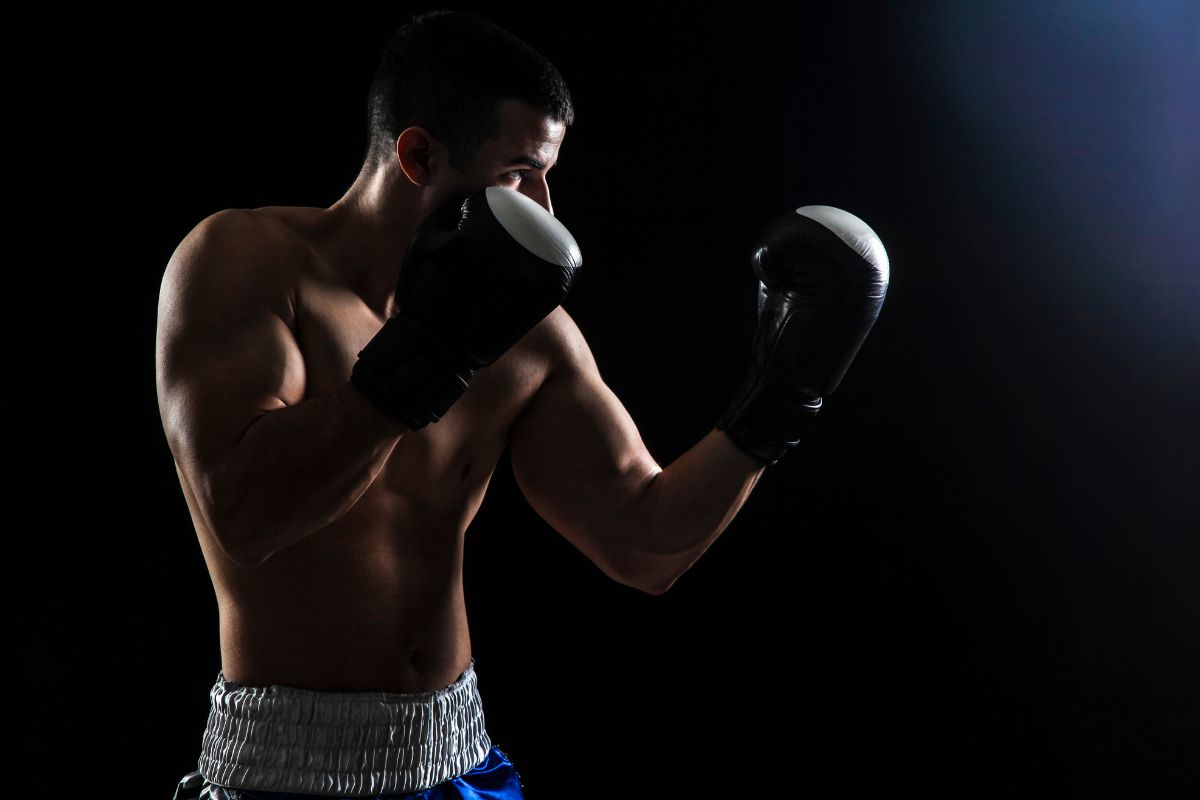
Crosses are performed by throwing your left hand forward, while your right hand stays behind you. Uppercuts are thrown from above your opponent’s head, using both hands.
Jabbing
A jab is a punch delivered without moving your feet, usually aimed at an opponent’s body or chin.
As well as being useful for setting up a combination, jabs are also effective against opponents who move around too much.
They’re not really a ‘puncher’ type of punch, but they do pack quite a bit of power.
This is probably the simplest of all the punches, and is often used as part of a sequence of punches; it is a great way to start off a round, because it forces your opponent to defend themselves, and gives you time to set up your next attack.
The best thing about jabs is that they can be used to open up space for your other attacks.
If you throw a jab straight down the center line of your opponent’s chest, he will have no choice but to duck down and try to avoid getting hit.
This means that you’ve given yourself plenty of room to swing your hands and land some punches. It’s worth noting that if you throw a jab too low, it won’t hurt anyone; instead, you’ll simply be wasting precious energy.
Jabbing is a great way to keep your opponent on the defensive, and force them to react to your punches.
By using a jab as part of a sequence, you can make sure that your opponent doesn’t know what’s coming next. For example, you could throw a jab, followed by a right hand, then immediately throw another jab.
This would confuse your opponent, because they wouldn’t expect a second jab after the first one. They’d think that you were going to throw a right hand, only to change course mid-way through.
But by throwing a jab, you’ve made it clear that you aren’t changing direction.
Instead, you’re keeping your opponent guessing, which makes it much harder for them to anticipate what’s coming next.
Hooking
Hooks are done by stepping forward with your front foot, and swinging your rear leg back towards your opponent.
Your fist should come up high, and end up pointing downwards, with the aim being to hit the other person just below their ear.
A good hook will cause pain, which makes your opponent flinch and give you the opening to follow up with another punch. This is a powerful punch, and is used primarily to knock someone out.
Uppercutting
This is the most devastating punch in boxing, and is most often used to knock people out and deliver the final blow in a fight.
Uppercuts are thrown upwards from your shoulder, aiming to catch your opponent under the jawline.
To perform this technique, stand with your fists raised above your shoulders, and step forward with one foot. Swing your arms backwards and forwards, like you’re doing a pendulum motion.
When you reach the peak of your movement, bring your elbows together, then push them apart again, before bringing them back together once more.
At this point, your elbow should be directly over your opponent’s face. You should aim to hit him just below his jawline, where he feels the strongest.
If you want to use this technique effectively, you will need to take the time to practice it so that you don’t miss – accuracy is everything when it comes to delivering a good uppercut.
Cross
A cross is similar to a jab, except that it’s thrown diagonally across the body rather than straight down.
Like jabs, crosses are also useful tools to keep your opponents on their toes, and they work well in combination with other techniques.
Throwing a cross is usually done by stepping forward, and swinging your arm across your opponent’s body.
Your fist should be held high, and pointed towards your target. When you throw a cross, you want to ensure that your arm is moving quickly, so that you can cover as much distance as possible.
When you throw a cross, it’s important to remember that you shouldn’t move your head while doing so.
If you do, you risk giving away your position, and making yourself vulnerable to counterattacks. Instead, focus on staying still and letting your arms move freely.
When throwing a cross, you can use it to set up other strikes.
For example, if you throw a cross, followed by a hook, you’ll have forced your opponent to step back and take evasive action. This gives you time to recover, and allows you to throw another punch.
What Is Kickboxing?
Kickboxing is a martial art that combines elements of both Boxing and Muay Thai.
It was developed in Thailand, but has since spread around the world.
The name “kickboxing” refers to the fact that the sport involves kicking, punching, kneeing, and even spinning kicks.
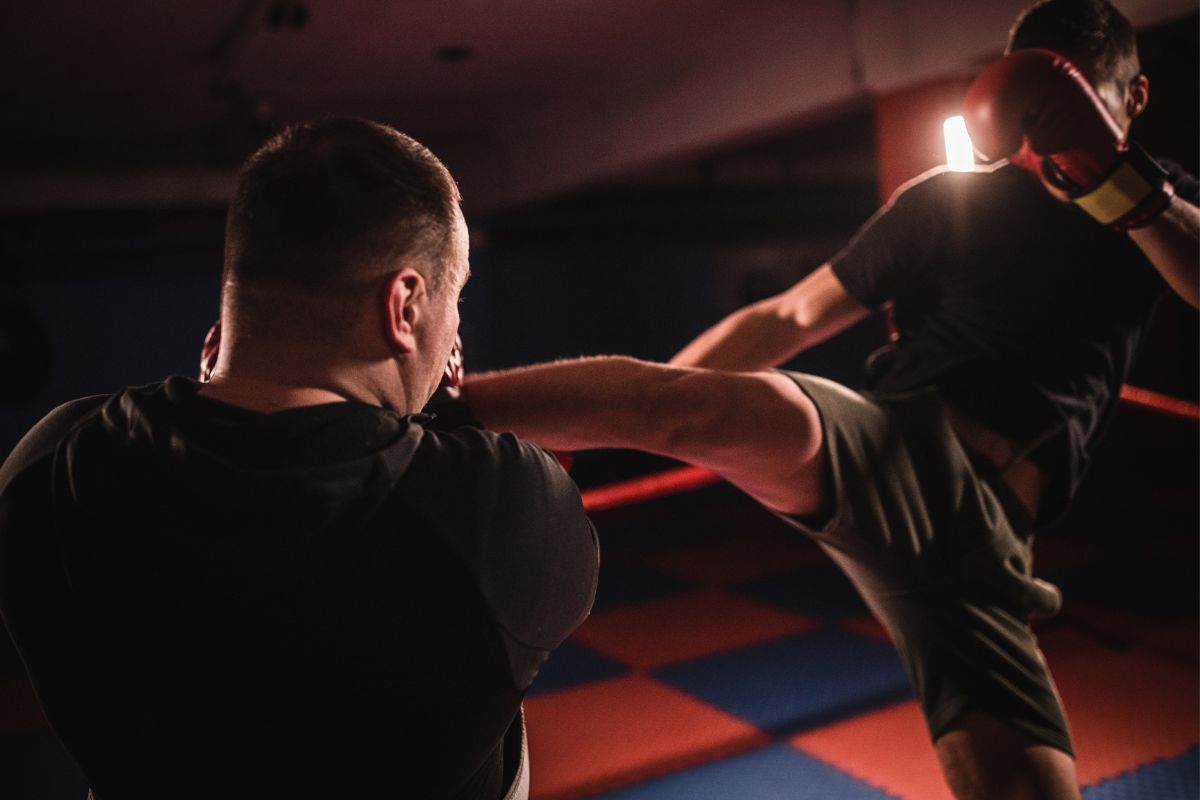
However, there are many different styles of kickboxing, each with its own unique characteristics.
Kickboxing is very popular in Thailand, and is practiced by almost everyone who trains in Muay Thai. It’s also becoming increasingly popular in the UK, Europe, and North America.
There are various reasons why people choose to train in kickboxing, including personal fitness goals, self-defense, and competition.
The History Of Kickboxing
Kickboxing first began in the 1920s, when the founder of Muay Thai, Chok Dee, created an unarmed combat system called Prapa Nais.
In this style, fighters would strike at their opponent’s legs and knees, using punches, kicks, and knees to force them into submission.
Although this form of fighting was initially intended for self-defense, it became hugely popular among the general public.
As a result, Chok Dee decided to create a new version of Prapa Nais, which included weapons such as sticks, swords, knives, and guns.
This new version of Prapanai became known as Muay Boran, or “Thailand Boxing”.
In the 1950s, the government of Thailand banned all forms of Prapa Naisin, believing that it had become too violent. This ban lasted until the 1980s, when it was finally lifted, allowing Muay Thai to return to popularity.
Since then, Muay Thai and kickboxing have continued to grow in popularity, and today, thousands of people practice these sports every day.
How Does Kickboxing Work?
Kickboxing is a fast-paced, high-intensity support built around kicks and punches.
Unlike boxing, where most of the emphasis is placed on footwork and defense, kickboxing focuses more on offense.
Because of this, kickboxers must learn how to effectively attack their opponents’ weaknesses, and avoid those areas where they’re strongest.
There are a number of key techniques that make up kickboxing, and these include:
- Kicks – These are used to deliver powerful blows to the body, face, and head. They may be delivered from either side of the body, and can come straight down, upwards, or diagonally.
- Punches – These are usually delivered to the midsection (stomach) or head. You should aim to hit your target area before your opponent does, so that you can get maximum power out of your blow.
- Spinning Kicks – Spinning kicks involve delivering a series of rapid kicks while rotating your leg through 360 degrees. They are often used to knock an opponent off balance, or to break their guard.
- Strikes – Strikers use punches and elbows to attack their opponent. When striking, you should always focus on hitting your target area, rather than just throwing a punch.
- Jabs – Jabs are short range punches that are aimed at the opponent’s chin, jawline, or nose. If you want to score a knockout, jabs are one of the best ways to do it.
- Blocks – Blocks are defensive moves designed to protect yourself against incoming strikes. By blocking, you can stop your opponent from scoring points, or even knocking you out!
- Defense – Defense involves moving away from your opponent, and trying to keep him/her at bay. It also includes dodging attacks, and countering with your own attack.
- Footwork – Footwork refers to the way you move your feet during a fight. Good footwork helps you to stay safe, by giving you time to dodge attacks, and gives you the opportunity to counterattack.
What Are The Differences Between Boxing And Kickboxing?
Now that we have considered boxing and kickboxing in isolation, it is time to put them head to head. Some of the main differences between kickboxing and boxing include:
- Size – Boxers tend to be much bigger than kickboxers. While there are some exceptions, kickboxers generally weigh less than boxers.
- Speed – Kickboxing is faster paced than boxing. There is no set speed limit in kickboxing, but fighters will typically try to go as fast as possible without risking injury.
- Technique – As mentioned above, kickboxing emphasizes technique over strength. This means that kickboxers need to develop good hand-eye coordination, and excellent timing.
- Power – Power is important for both styles, but kickboxing relies more heavily on it. A boxer who has developed his punching skills will naturally become stronger, but he won’t necessarily gain any real advantage in terms of power. On the other hand, a kickboxer who lacks punching ability will find that he doesn’t stand much of a chance if he tries to rely solely on his kicks.
- Style – While boxing relies primarily on punches and footwork – we have all heard boxers being referred to as “dancing” around the ring – kickboxing tends to emphasize kicking techniques. In addition, kickboxing allows its practitioners to work on many different types of kicks, including spinning kicks, jumping knees, roundhouse kicks, and flying knees.
Are There Any Similarities Between Boxing And Kickboxing?
Despite the differences, there are also a number of similarities between kickboxing and boxing. Both boxing and kickboxing require similar core muscles like the abs, back, shoulders, arms, legs, and hips.
Both sports also require the same basic movement patterns, such as walking forward, stepping sideways, turning, and pivoting, and both rely heavily on footwork.
Ultimately, both boxing and kickboxing will teach you how to fight, how to defend yourself, and how to keep your body fit, strong and healthy.
They will both also boost your self-esteem and mental health, and show you the amazing feats that you are truly capable of.
How Do I Choose Between Boxing And Kickboxing Classes?
If you’re looking to get into either sport, then you’ll probably want to choose which style is right for you.
Though the styles have a number of differences, they are both strong martial arts, and will offer you plenty of amazing benefits not only to your overall strength, flexibility and fitness, but also to your confidence, self-esteem and overall well being.
The best way to decide is to try out a class in each style; many gyms will allow you to try your first class for free, and this can be perfect for seeing what you vibe with – you are likely to realize that you have found the perfect sport relatively quickly, so give it a go!


